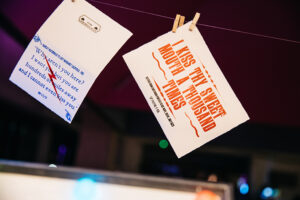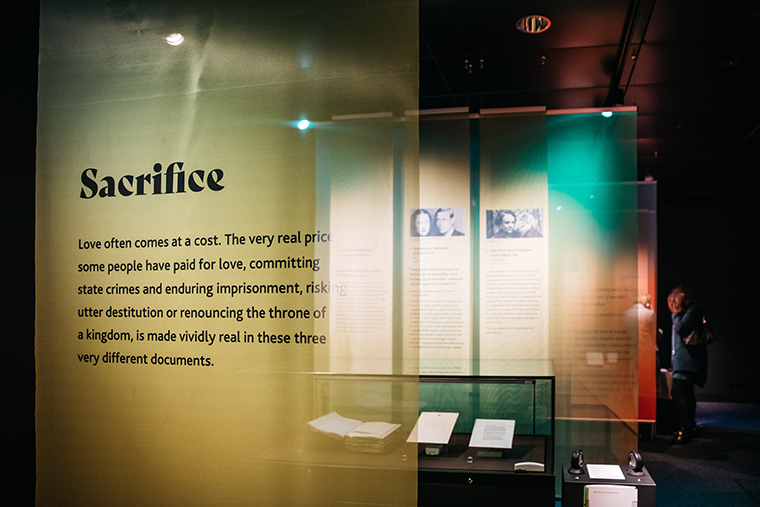When The National Archives’ exhibition team created With Love, they wanted to demonstrate the breadth of material in the archive collections, and use this material to highlight underrepresented voices and connect individuals to the past and to each other. We talked to the team to find out more…
What barriers were identified and are being addressed by this work?
With Love was designed to be a tonal shift in The National Archives’ exhibition programme, following Protect and Survive: Britain’s Cold War Revealed. By using the universal theme of love, the exhibition aimed to surprise audiences who would not necessarily associate the archive of government with such a theme. A wide range of material relating to love in all its forms showcased intimate, personal stories from across all sections of society. These audiences were identified as including people that had not necessarily always seen themselves represented in The National Archives’ previous exhibitions, and With Love enabled women, BAME, LGBTQ+ and working class voices to be heard in their own words.

Printmaking was part of the on site experience
There was also an emphasis on presenting the material thematically rather than adopting a historical narrative, highlighting the feelings and points of connection that ran through the material, regardless of what period it came from, or who wrote them. The exhibition’s running dates were bookended by LGBT+ History Month (February) and Pride Month (June) with Women’s History Month also falling in this period (March), which also enabled the exhibition to be presented in wider contexts. For the first time, and in keeping with new accessibility guidelines, full descriptions of exhibits and transcriptions of audio material were available to those who visited. During the time it was open, there was a spike in younger visitors and first-time visitors, suggesting that With Love’s universal theme and wide range of material was attracting more diverse audiences.
Who was involved in the project, what input did they have, what benefit did they receive from taking part?
The exhibition was largely developed internally, but also included collaboration with Jodi Ann Bickley, author of One Million Lovely Letters. Together we created a letter-writing interactive that encouraged audiences to write to Jodi, which ensured the exhibition contained a participatory element and gave audiences time and space to reflect on the feelings they had about the exhibition.
When the Covid-19 pandemic meant the in-person exhibition had to close, it went digital, and the participatory element also shifted online. The National Archives encouraged members of the public to send in their letters, and Letters of Lockdown was born. For participants, writing letters on the themes of separation, kindness, strength and hope during the pandemic was comforting and a way of communicating the difficult feelings they experienced.

One of the eight themes of the exhibition was ‘sacrifice’.
What is the intended project legacy?
The intended legacy of With Love was to create a permanent change in audiences’ ideas of what archives are, to demonstrate the breadth of material held by The National Archives, and to reveal to them the personal stories this material contains. It was also designed to show that The National Archives is able to amplify the voices of, and talk more about, a wider and more inclusive range of individuals and their life experiences. The exhibition’s popularity gives more weight to future exhibitions embedding inclusive material from the collections and designing them to appeal to a wide range of audiences.
How visible/accessible will the outputs be?
The online With Love exhibition will be live on The National Archives’ website for a limited amount of time, but will then be available on the UK Government Web Archive, run by The National Archives itself, in perpetuity. We recognise the need to make online content as accessible as possible, and so all With Love online content has been created in light of the Web Content Accessibility Guidelines (version 2.1). A series of short films about individual exhibits, including this film about a love letter between two men, have also been made in conjunction with the BBC, adding to the exhibition’s outputs and widening its visibility by linking back to the online exhibition.
Find out more
Explore our With Love exhibition online
Hear stories of love through the ages – listen to the special three-part With Love series of our On the Record podcast
Watch Hidden Love, our film that takes you through records relating to queer history
